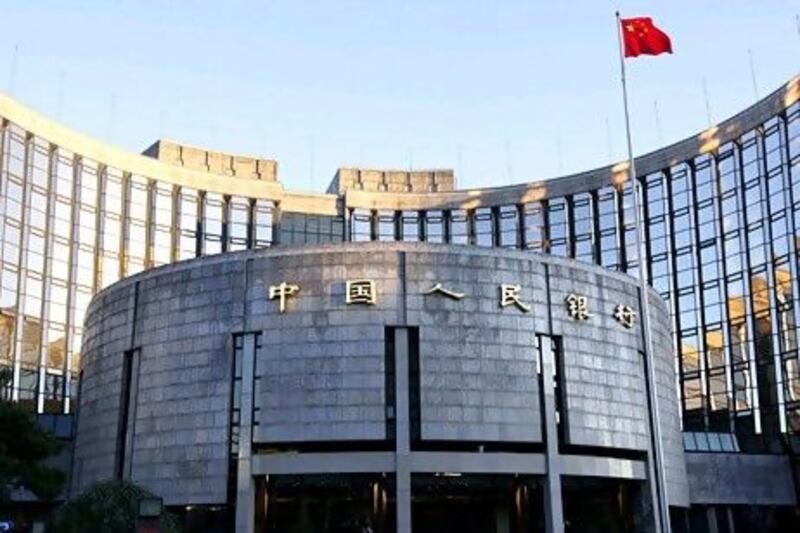Both economies depend heavily on the global climate but worries about them having a hard landing are overblown. Indeed Asia's defining moment may be near. Stephen Roach writes
AFears are growing that China and India will be the next victims of the global economic carnage.
This would have enormous consequences. Asia's developing and newly industrialised economies grew at an 8.5 per cent average annual rate over 2010 and 2011 - nearly triple the 3 per cent growth elsewhere in the world. If China and India are next to fall, Asia would be at risk, and it would be hard to avoid a global recession.
These concerns are understandable: both economies depend heavily on the broader global climate.
China is sensitive to downside risks to external demand - more relevant than ever since crisis-torn Europe and the US collectively accounted for 38 per cent of total exports in 2010. But India, with its large current-account deficit and external funding needs, is more exposed to tough conditions in global financial markets.
Yet fears of hard landings for both economies are overblown, especially regarding China. Yes, China is paying a price for aggressive economic stimulus undertaken in the depths of the subprime crisis. The banking system funded the bulk of the additional spending, and thus is exposed to any deterioration in credit quality that may have arisen from such efforts. There are also concerns about the property market and mounting inflation.
While none of these problems should be minimised, they are unlikely to trigger a hard landing. Long fixated on stability, Chinese policymakers have been quick to take preemptive action.
That is particularly evident in China's successful campaign against inflation. Administrative measures in the agricultural sector, aimed at alleviating supply bottlenecks for pork, cooking oil, fresh vegetables, and fertiliser, have pushed food-price inflation lower.
Meanwhile, the People's Bank of China, which raised benchmark one-year lending rates five times in the year ending last October, to 6.5 per cent, now has plenty of scope for monetary easing should economic conditions deteriorate.
The same is true with mandatory reserves in the banking sector, where the government has already pruned 50 basis points off the record 21.5 per cent required-reserve ratio. Relatively small fiscal deficits - only about 2 per cent of GDP in 2010 - leave China with an added dimension of policy flexibility should circumstances dictate.
Nor has China been passive with respect to mounting speculative excesses in residential property. In 2010, it implemented tough regulations, raising downpayments from 20 to 30 per cent for a first home, to 50 per cent for a second residence, and to 100 per cent for purchases of three or more units. This strategy seems to be working.
Moreover, it is a serious exaggeration to claim, as many do, that the Chinese economy is one huge property bubble. Yes, total fixed investment is approaching an unprecedented 50 per cent of GDP, but residential and non-residential property, combined, accounts for only 15 to 20 per cent of that - no more than a tenth of the overall economy.
As for Chinese banks, the main problem appears to be exposure to ballooning local-government debt which, according to the government, totalled US$1.7 trillion (Dh6.2tn) - or nearly a third of GDP - at the end of 2010. About half of this debt was on their books prior to the crisis.
Some of the new debt that resulted from the stimulus could well end up being impaired, but continuing urbanisation - about 15 to 20 million people per year move to cities - provides enormous support on the demand side for investment in infrastructure development and residential and commercial construction. That tempers the risks to credit quality and, along with relatively low loan-to-deposit ratios of about 65 per cent, should cushion the Chinese banking system.
India is more problematic. As the only economy in Asia with a current-account deficit, its external funding problems can hardly be taken lightly.
Like China, India's economic-growth momentum is ebbing. But unlike China, the downshift is more pronounced - GDP growth fell through the 7 per cent threshold in the third quarter of last year, and annual industrial output actually fell by 5.1 per cent in October.
But the real problem in, in contrast to China, Indian authorities have far less policy leeway. For starters, the rupee is in near free-fall. That means the Reserve Bank of India - which has lifted its benchmark policy rate 13 times since the start of 2010 to deal with a still-serious inflation problem - can ill afford to ease monetary policy. Moreover, an outsize consolidated government budget deficit of about 9 per cent of GDP limits India's fiscal-policy discretion.
While China is in better shape than India, neither economy is likely to implode on its own. It would take another shock to trigger a hard landing in Asia.
One obvious possibility would be a disruptive break-up of the euro zone. In that case, both China and India could find themselves in serious difficulty - with an outright contraction of Chinese exports and heightened external funding pressures for India.
While I remain a euro-sceptic, I believe that the political will to advance European integration will prevail. Consequently, I attach a low probability to the euro zone's disintegration. Barring such a worst-case outcome for Europe, the odds of a hard landing in either India or China should remain low.
Seduced by the political economy of false prosperity, the West has squandered its might. Driven by strategy and stability, Asia has built on its newfound strength. Asia's defining moment could be at hand.
Stephen Roach, a member of Yale University faculty, is the non-executive chairman of Morgan Stanley Asia and the author of The Next Asia
* Project Syndicate
twitter: Follow our breaking business news and retweet to your followers. Follow us





